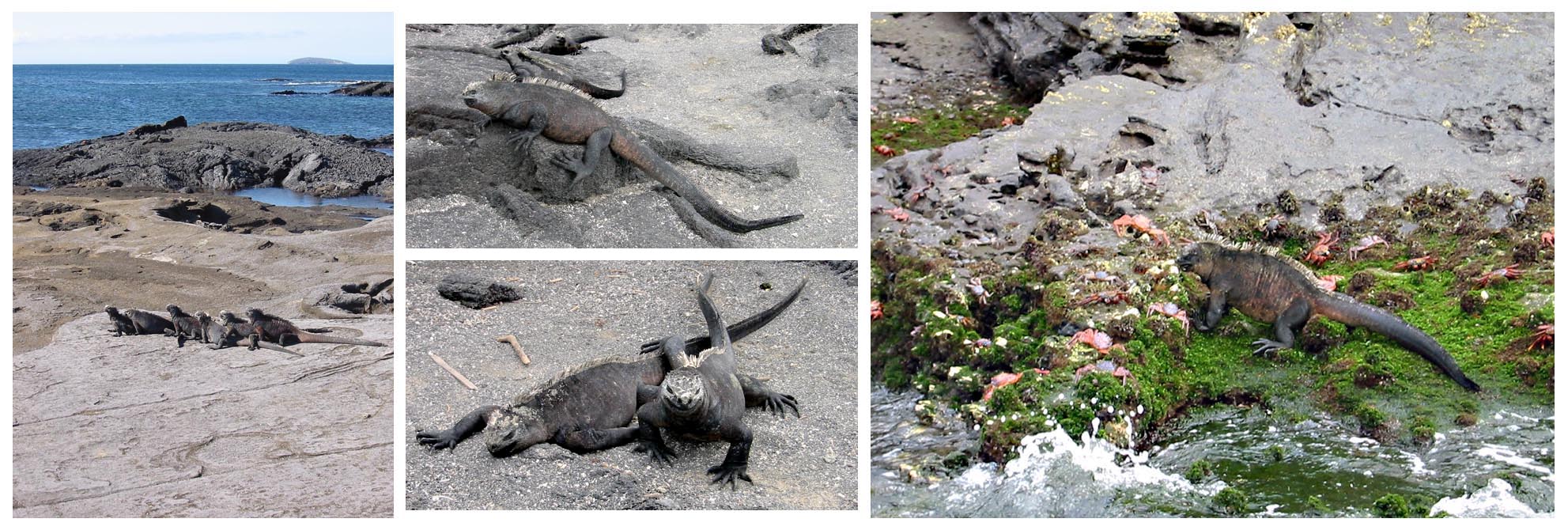A last look at some of the birds of the Galapagos Islands should include one of Darwin’s finches, but naming which of the 13 species is in the photo below is beyond our ability. To further confuse the issue, Wikipedia is now reporting that the “finches” might actually belong to the tanager family. However, we have no such problems with the Galapagos Penguin. There is only one equatorial penguin species, and this lone individual calmly posed while our boat pulled within a few feet.

Galapagos Islands // Left: Finch in a Palo Santo tree on Isla Isabela // Right: Galapagos Penguin on Isla Fernandina
The absence of leaves on the Palo Santo trees makes life easier for bird watchers, and the Blue-footed Booby is equally easy to spot along the shores of several of the islands. The photo on the left of Candelabra Cactus on Isla Santa Cruz also managed to catch a lone booby, while the Blue-footed Booby group on the right was enjoying the cliffs of Isla Isabela. We did not venture north to Isla Genovesa, and therefore did not see their Red-footed cousins, which are smaller and have a blue beak and bright red feet. Unlike the beaks of finches or the shells of tortoises, nobody has proposed an evolutionary purpose or advantage for either blue or red feet. Possibly, sometimes nature is just having fun.

Galapagos Islands // Left: Candelabra Cactus (Jasminocereus thouarsii) on Isla Santa Cruz - with Booby // Right: Blue-footed Booby group on Isla Isabela
It may not be accurate to say we saved the best for last, but the sparkling personalities of the Marine Iguanas make them especially attractive. Fresh from a swim in the very cold current found in this part of the Pacific, the Iguana in the far right photo will now start the hours-long process of restoring body heat. If we were to add a thought balloon, this guy is probably thinking “Why can’t I just learn to eat crabs instead of marine algae?”
Another essential adaptation is displayed by the white masks in the lower middle photo, as the diet of the Marine Iguana requires the ability to expel excess salt. If no professional wrestler has yet to adopt a Marine Iguana mask for his costume, it is probably just an oversight.
The particular circumstances of our trip (Travel Plan) limited us to a four day Galapagos Islands cruise, but be assured that this is not enough time unless you absolutely do not have the ability to stay longer. As with any of our trips where we need to cover a long distance prior to showing up for an inflexible start time, such as an organized tour or cruise, we arranged to arrive a full day early. That buffer day, and two days we added to our stay after the cruise, allowed us to see just a small slice of mainland Ecuador.
Galápagos Islands Cruise – Page 1
Page 2 – Galapagos Giant Tortoise
Page 3 – Galapagos Environments
Page 4 – Galapagos Islands Wildlife
Page 5 – You Are Here
Page 6 – A Glimpse of Ecuador

If you would like to comment on this page, please use the form directly below.
To post a new topic, or submit your own photos, use the “Click here for Comments” link at the bottom of the page, and read the first post.